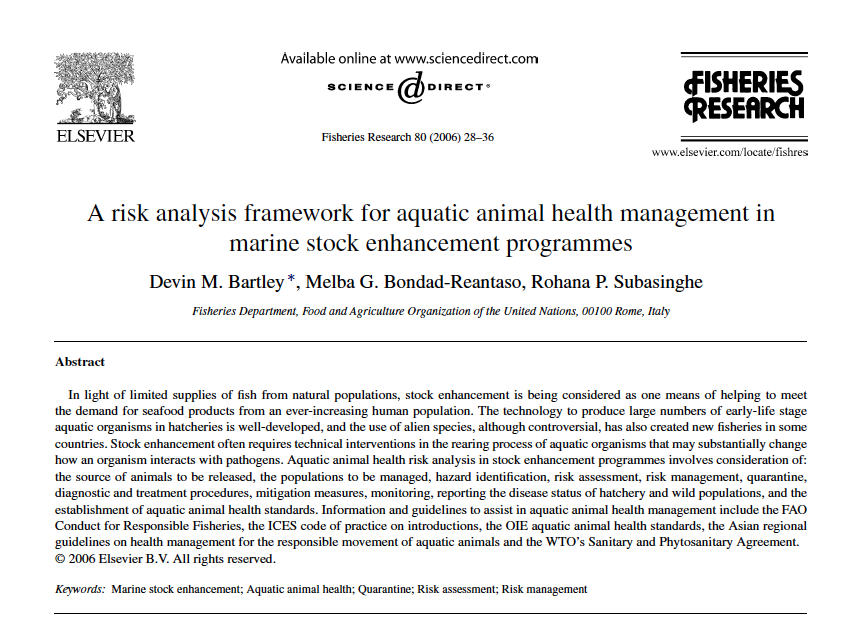A risk analysis framework for aquatic animal health management in marine stock enhancement programmes

In light of limited supplies of fish from natural populations, stock enhancement is being considered as one means of helping to meet the demand for seafood products from an ever-increasing human population. The technology to produce large numbers of early-life stage aquatic organisms in hatcheries is well-developed, and the use of alien species, although controversial, has also created new fisheries in some countries. Stock enhancement often requires technical interventions in the rearing process of aquatic organisms that may substantially change how an organism interacts with pathogens. Aquatic animal health risk analysis in stock enhancement programmes involves consideration of: the source of animals to be released, the populations to be managed, hazard identification, risk assessment, risk management, quarantine, diagnostic and treatment procedures, mitigation measures, monitoring, reporting the disease status of hatchery and wild populations, and the establishment of aquatic animal health standards. Information and guidelines to assist in aquatic animal health management include the FAO Conduct for Responsible Fisheries, the ICES code of practice on introductions, the OIE aquatic animal health standards, the Asian regional guidelines on health management for the responsible movement of aquatic animals and the WTO’s Sanitary and Phytosanitary Agreement.